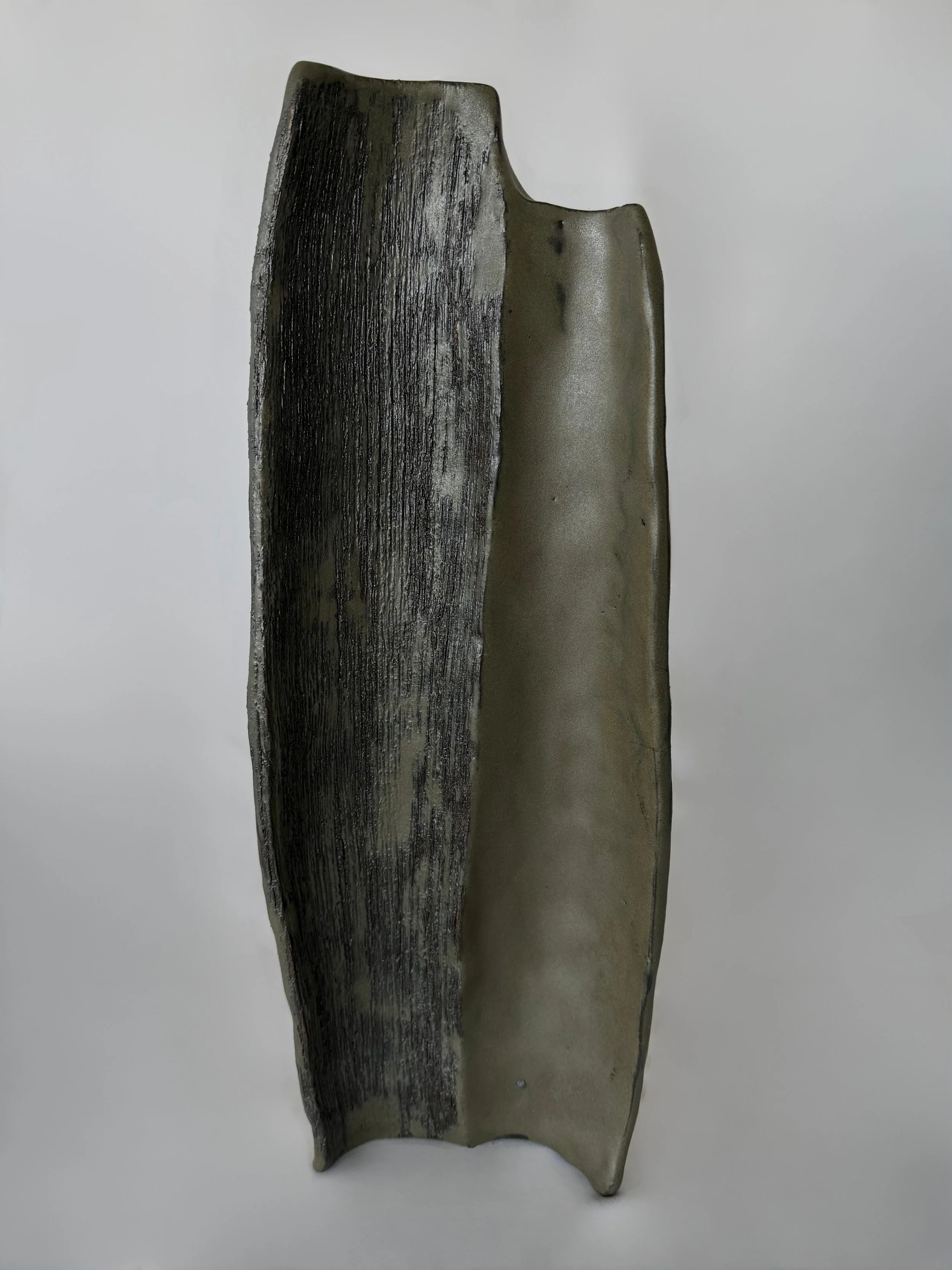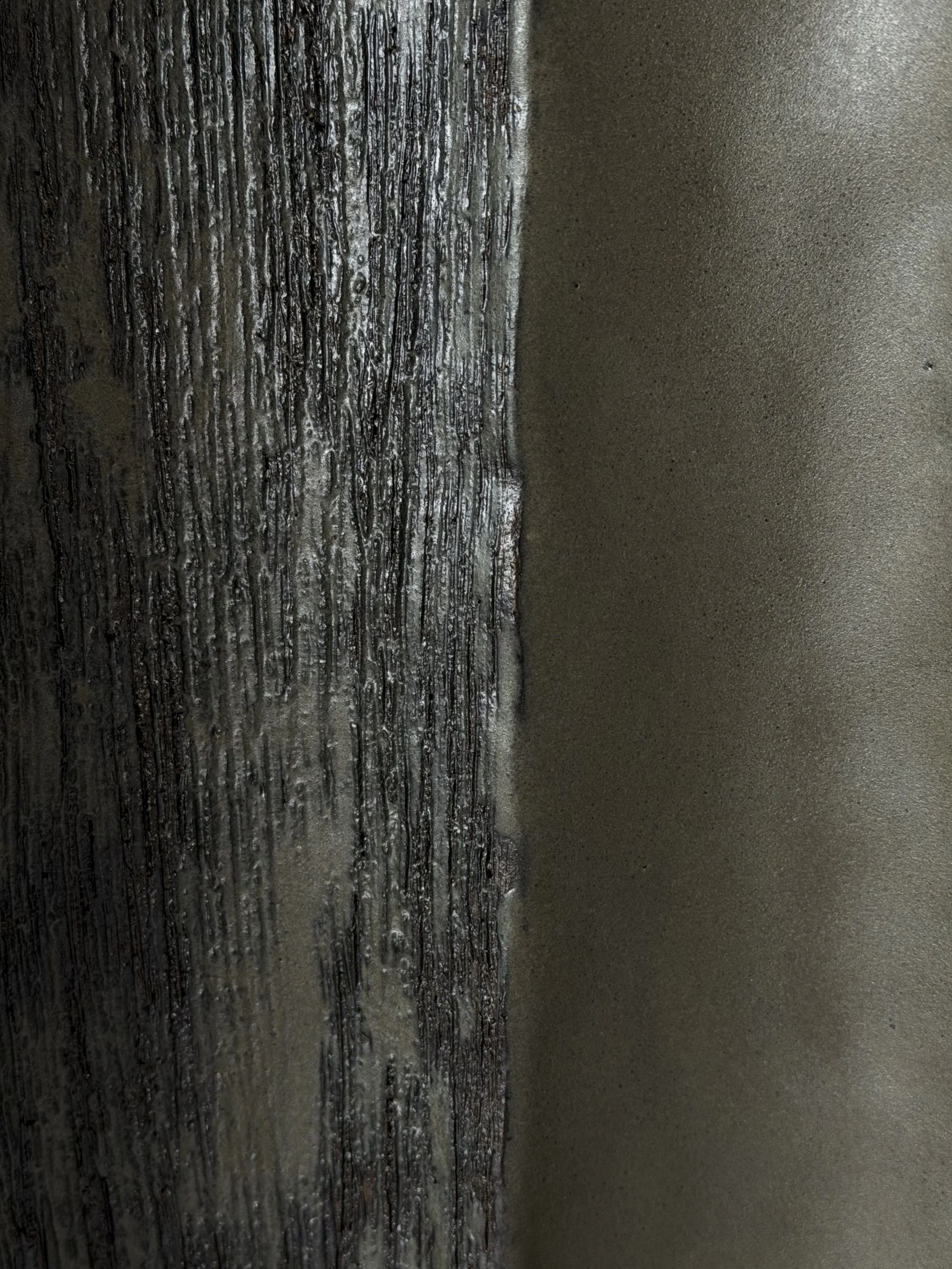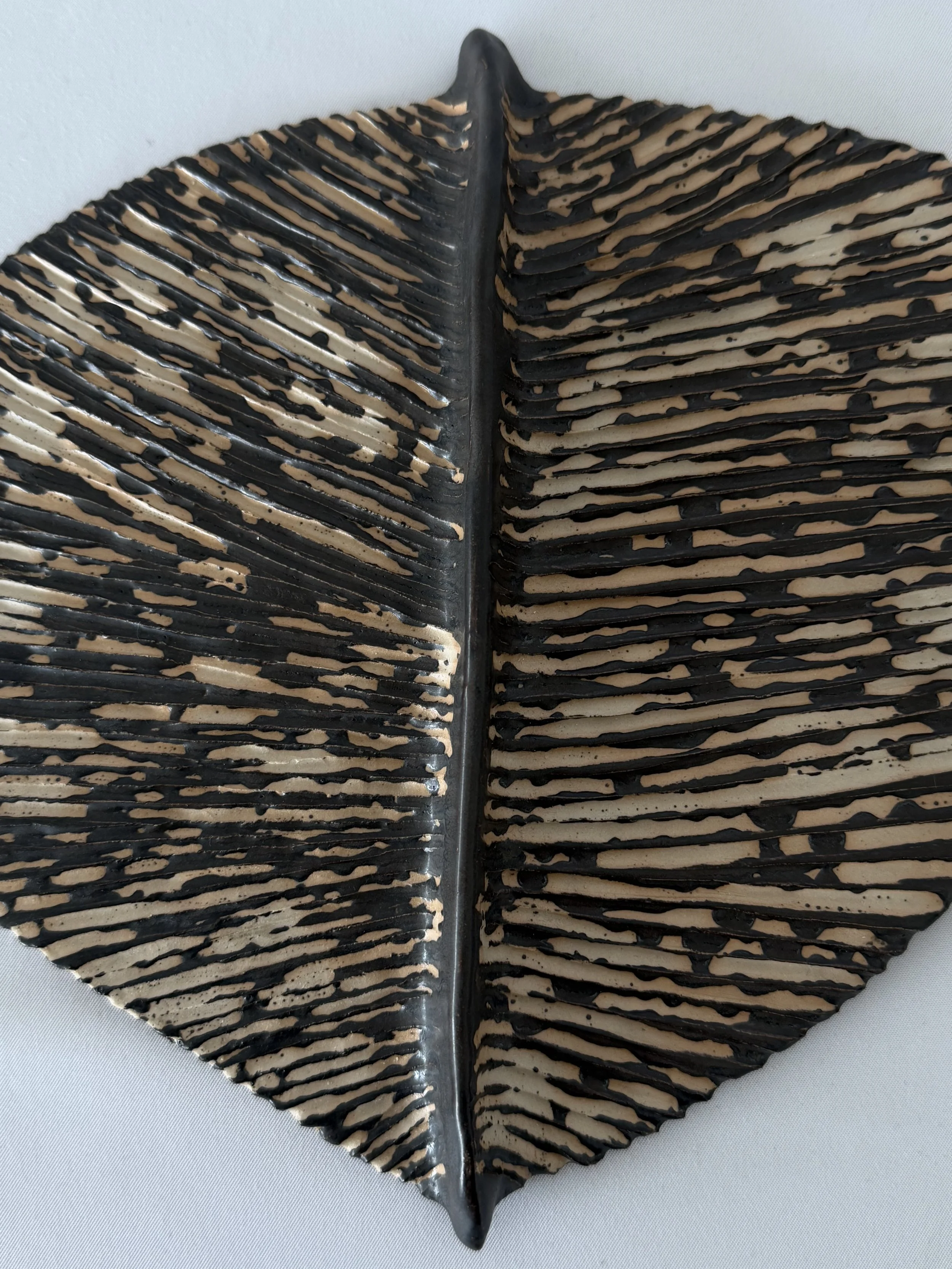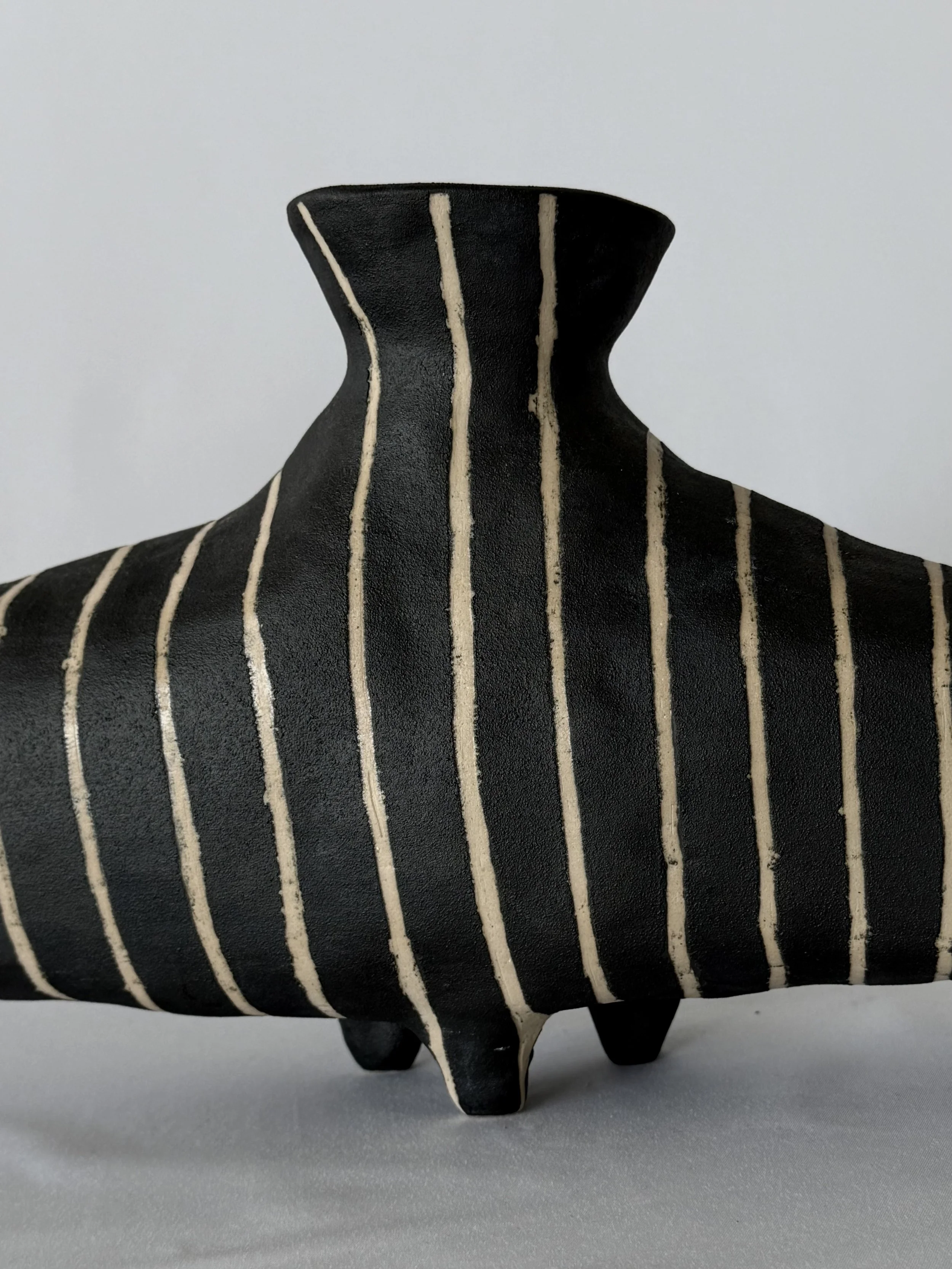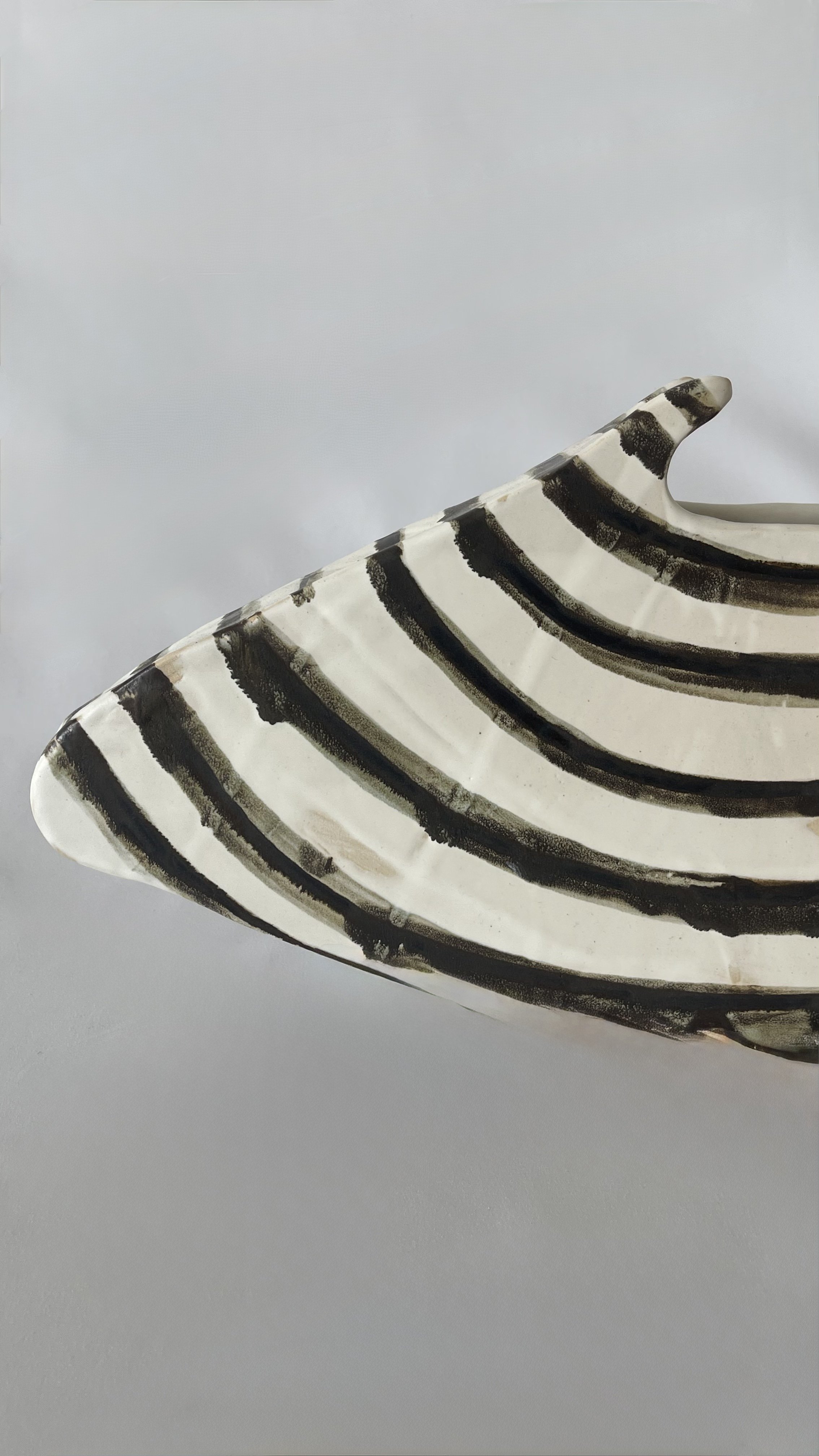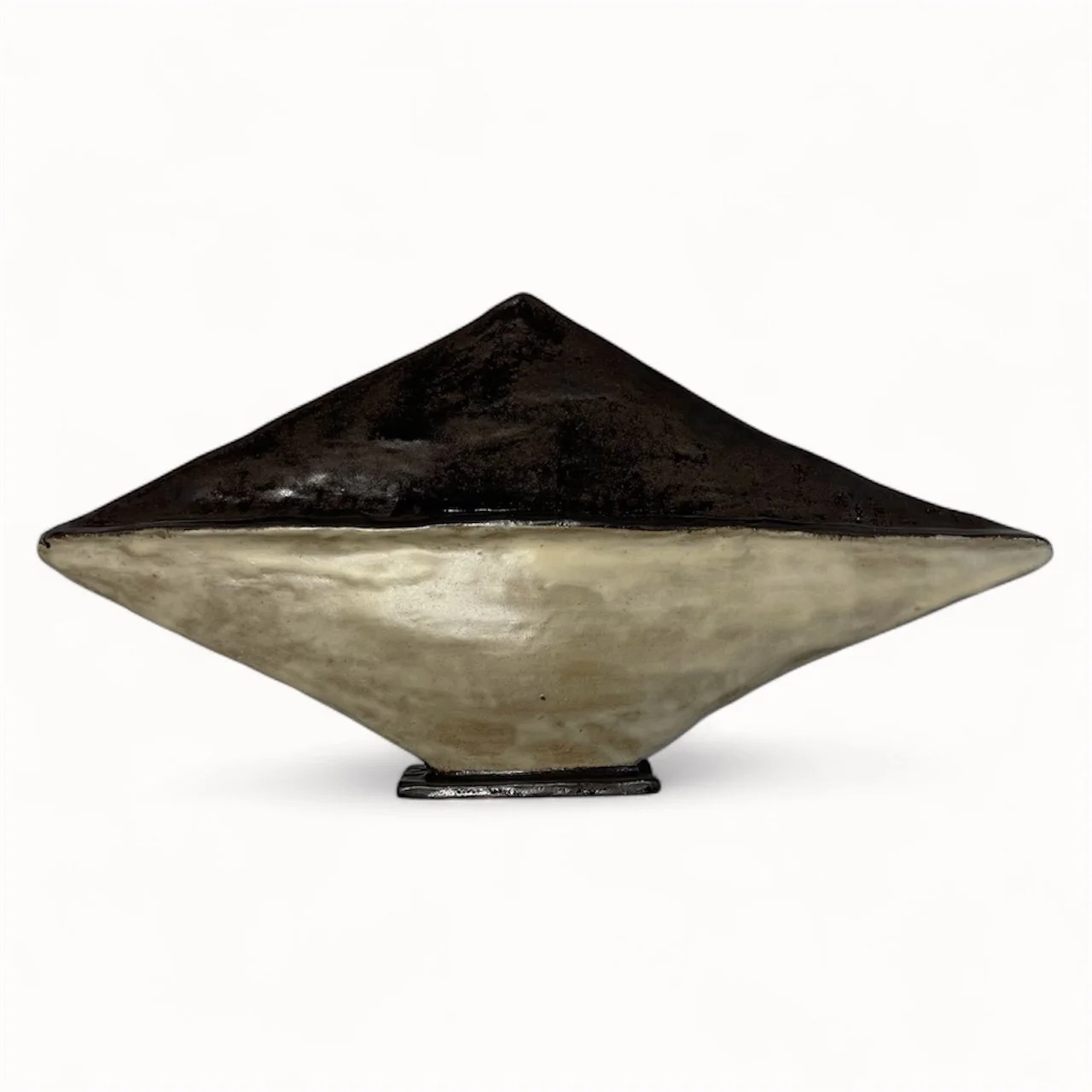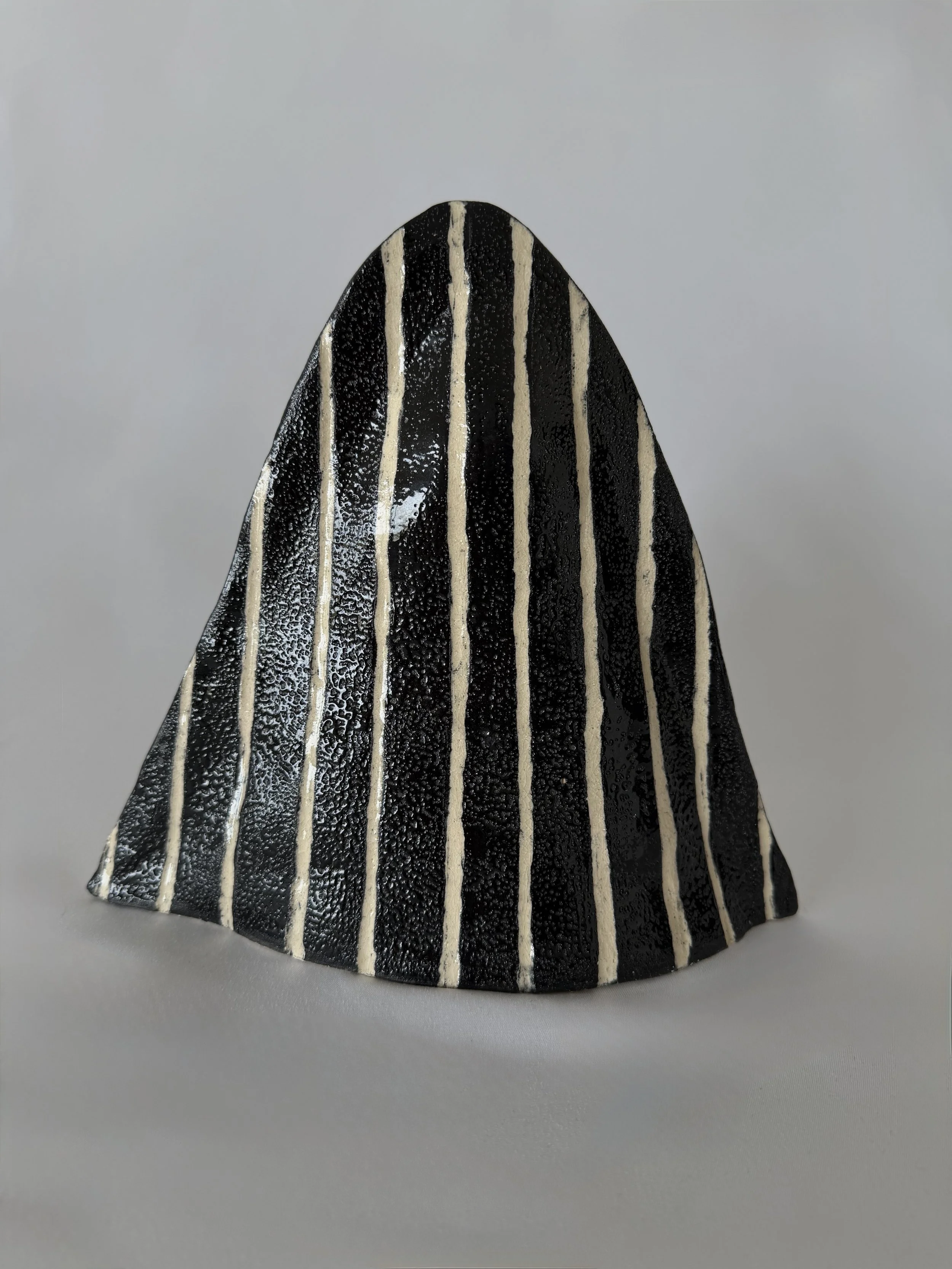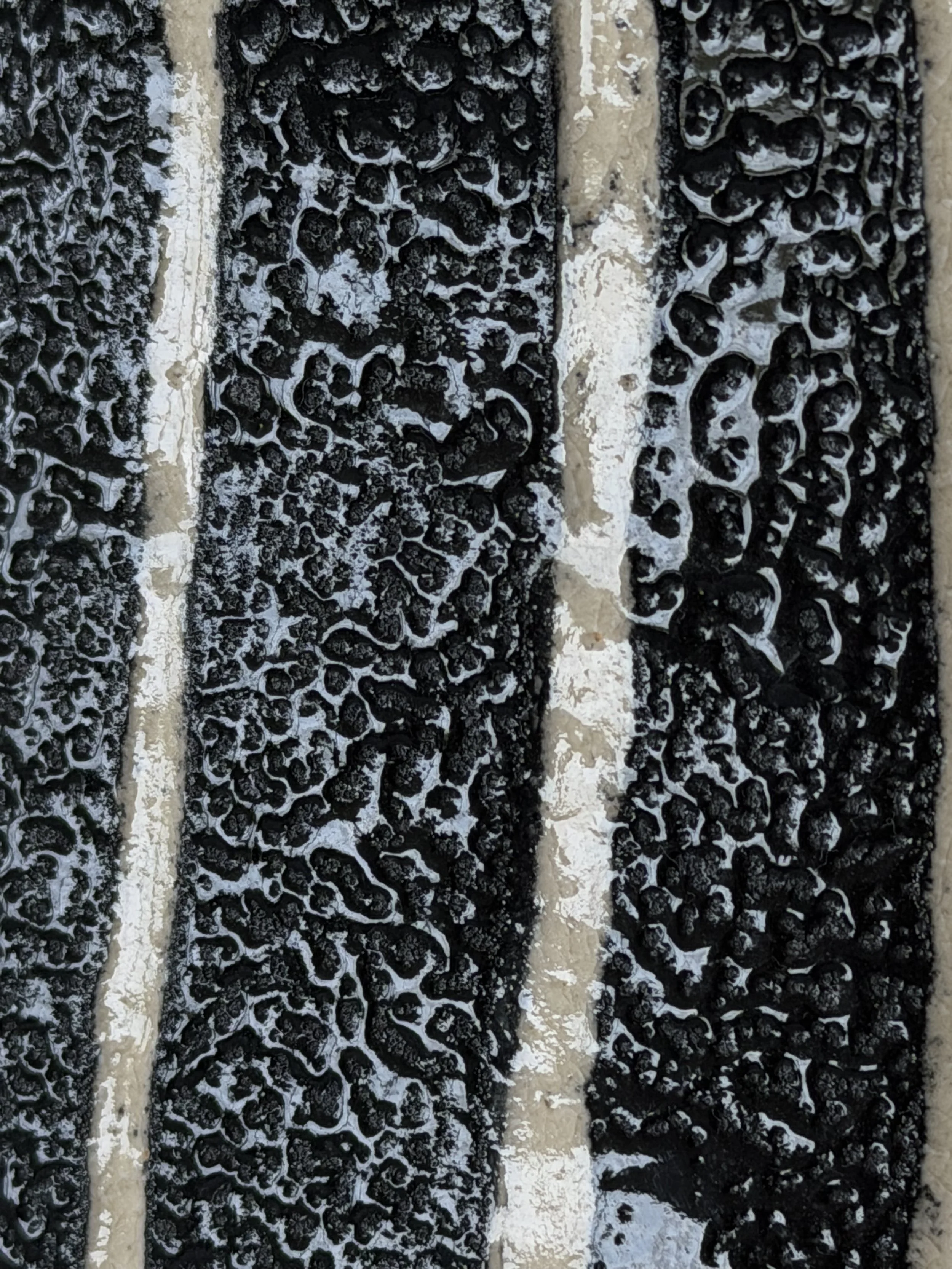
In Between
May 2025, London, United Kingdom
Overview
In Between, Akdemir explores what happens when two people try to stay connected without becoming one. The work investigates the space where two distinct beings meet, resist, and ultimately reshape one another.
Ayşe Nisa Akdemir presents a body of work exploring the invisible architecture of human connection. In Between investigates the space where two distinct beings meet, resist, and ultimately reshape one another. Rather than pursuing the romantic fantasy of total union, the work locates intimacy in something far more difficult and honest: the paradox of remaining separate while being fundamentally altered by another's presence.
Each ceramic piece asks a central question: What does it look like when two people try to stay connected without becoming one?
The forms embody opposing forces held in deliberate tension. Fine whispered lines meet bold, declarative textures. Smooth surfaces encounter rough ones. Light plays against dark. These are not reconciliations but conversations—moments frozen in the act of negotiating difference. The carved striations and organic textures are not decorative; they map emotional topography. They reveal how two energies can run parallel without merging, how pressure creates pattern, how constraint paradoxically enables movement.
Akdemir works exclusively through handbuilding—coil construction, slab work, pinching, composite methods. The hand leaves traces. Fingerprints, asymmetries, the evidence of struggle between intention and material resistance. These are not mistakes hidden but the entire meaning made visible. The rough surfaces, the visible tensions, the deliberate asymmetries—these are proof that this work is real.
In the Bound Form series, wings extend but do not fly. Forms reach outward yet remain tethered, suggesting the paradox at the heart of relationship: we long for freedom within connection, yet constraint is what enables us to remain in dialogue. Parallel Currents presents flows that never touch yet remain perpetually aware of each other. These works visualize the in-between most literally—the charged space between two conscious entities, proposing that the most profound intimacies are precisely those that refuse to merge, that maintain their separateness while acknowledging constant mutual influence.
The pieces are deliberately asymmetrical rather than balanced through sameness. This reflects Akdemir's conviction that healthy relationships aren't about two people becoming identical, but about two completely different voices finding a rhythm together. The absence of perfect symmetry suggests that true intimacy isn't about achieving equilibrium but about learning to live consciously at the edge of imbalance.
Ceramic embodies contradiction in its fundamental nature. It is ancient yet contemporary, functional yet artistic, fragile yet permanent, handmade yet formally precise. The material itself refuses easy categorization, existing in productive tension with multiple interpretive frameworks. In this work, ceramic's intrinsic duality becomes conceptual content. The viewer encounters not just representations of relationship but a material that is relational in its essential nature.
The brutalist aesthetic refuses decorative seduction. There is no gloss, no smoothness pursued for visual pleasure. Raw materiality and structural honesty dominate. True relationship requires the ability to encounter difference without attempting to soften it into acceptance. The rough surfaces, visible tensions, and asymmetries are not problems to solve but truths demanding to remain visible.
The works function best as an installation. Viewed together, they create a relational field where the viewer encounters not individual objects but a systematic investigation of how difference can coexist with profound connection. The varying scales matter—small intimate forms speak in whispers while large architectural pieces demand confrontation. Multiple frequencies of relationship occupy the same space simultaneously.
What if the line between us isn't a barrier but the relationship itself? What if true intimacy isn't about dissolving boundaries but about learning to live consciously at their edge? What if the most authentic moments happen precisely when we refuse to merge, when we insist on remaining ourselves while remaining radically open to another? These questions are not answered but enacted through form. The viewer encounters the proposition materially, in their body, as they move through space and experience the tensions these pieces hold.
In Between is not about the space between two people. It is about the space where two people actually live—in the constant, conscious negotiation of boundaries. Not in fusion, not in isolation, but in the fragile agreement to stay in dialogue. The ceramic forms are frozen moments of this negotiation. Each piece asks: What does it look like to love without dissolving? To connect without merging? To be fundamentally altered by another's presence while remaining distinctly yourself?

